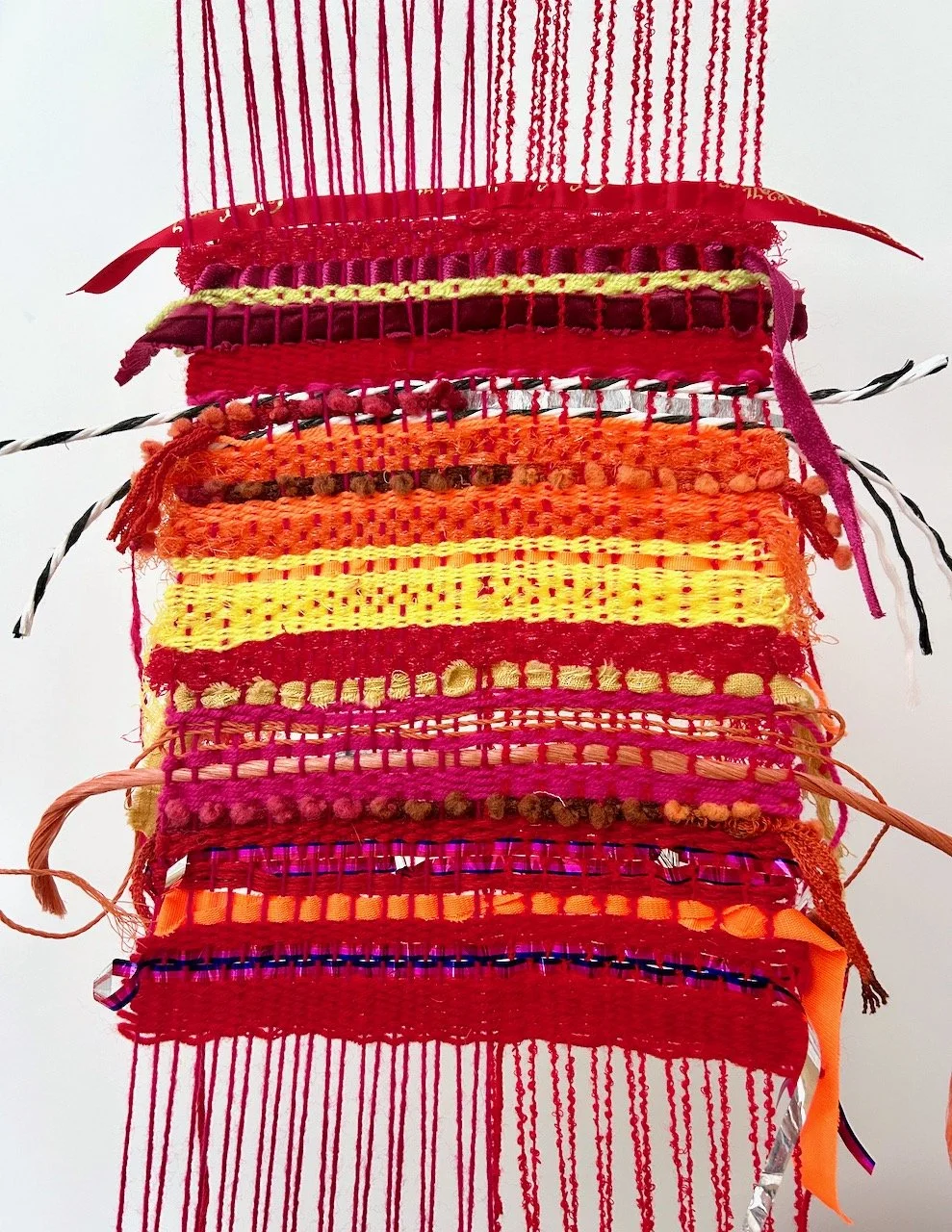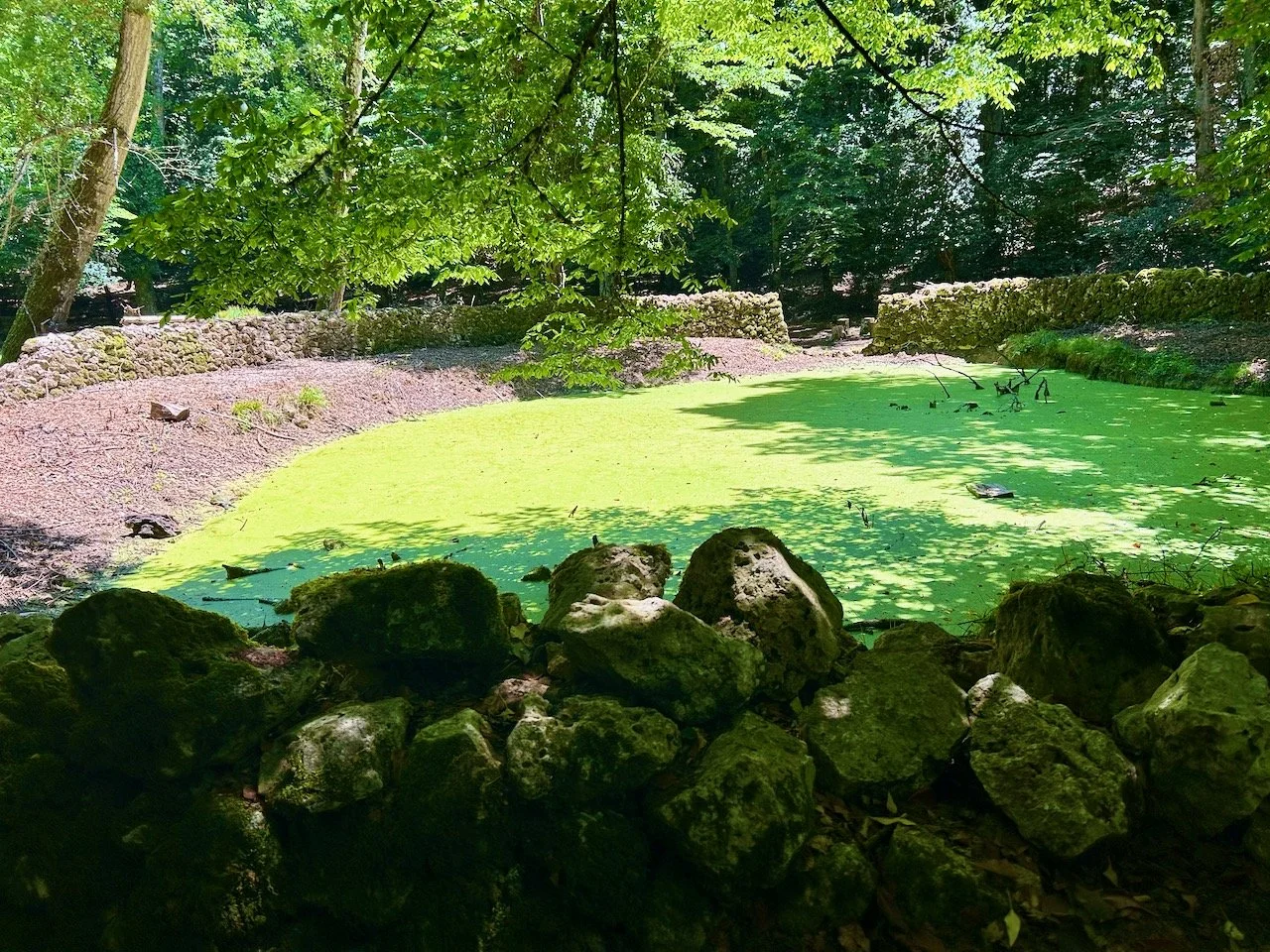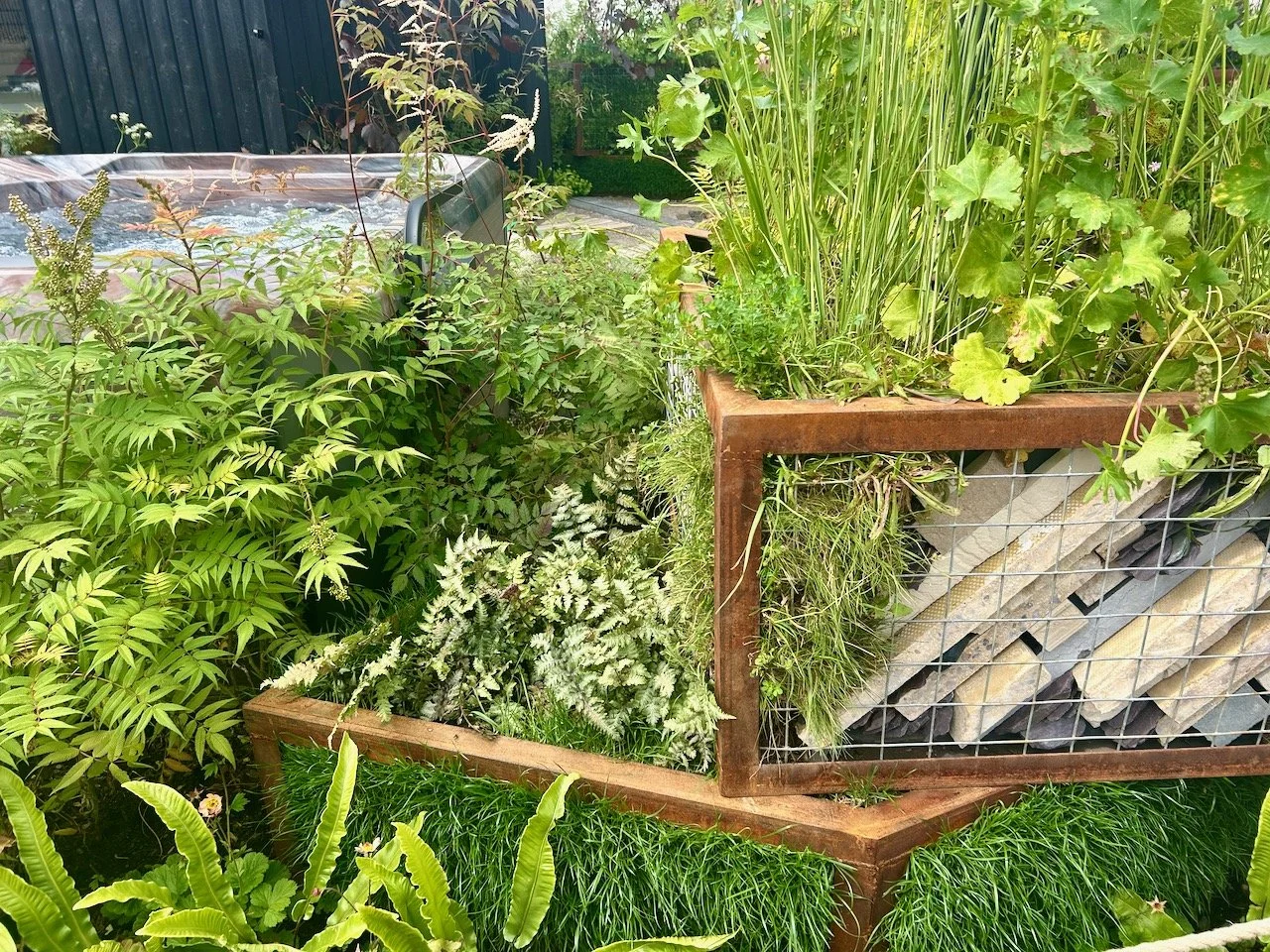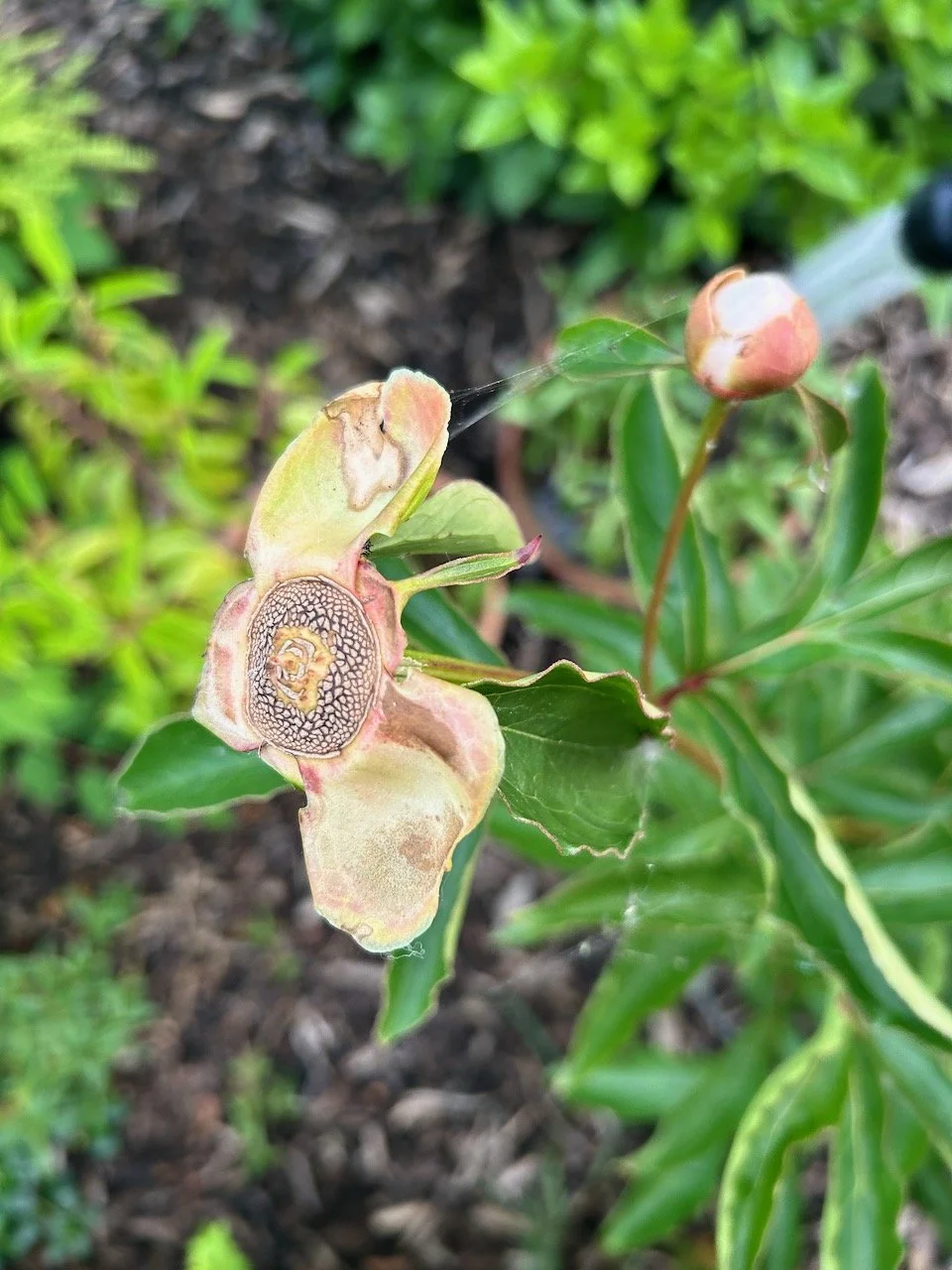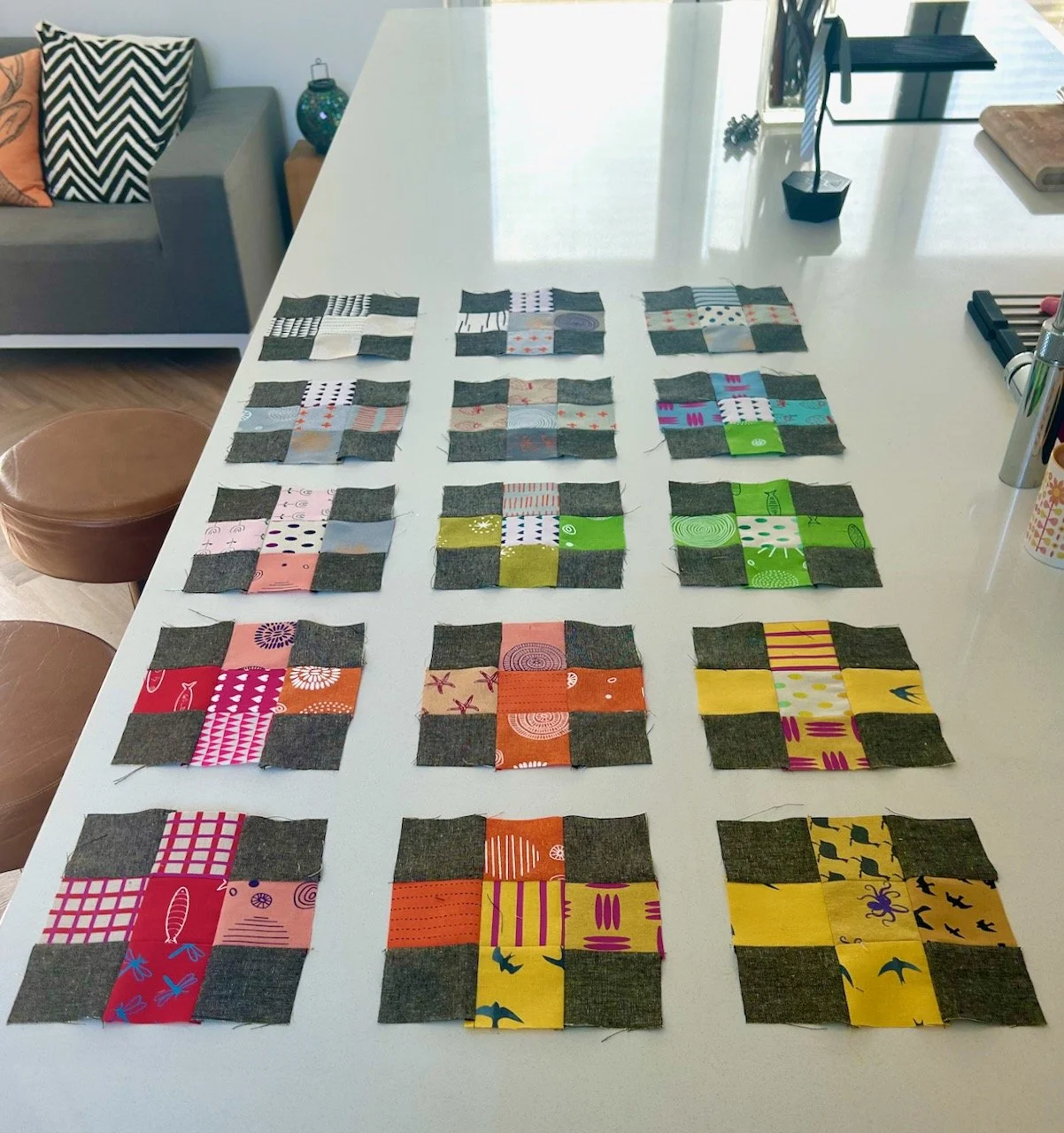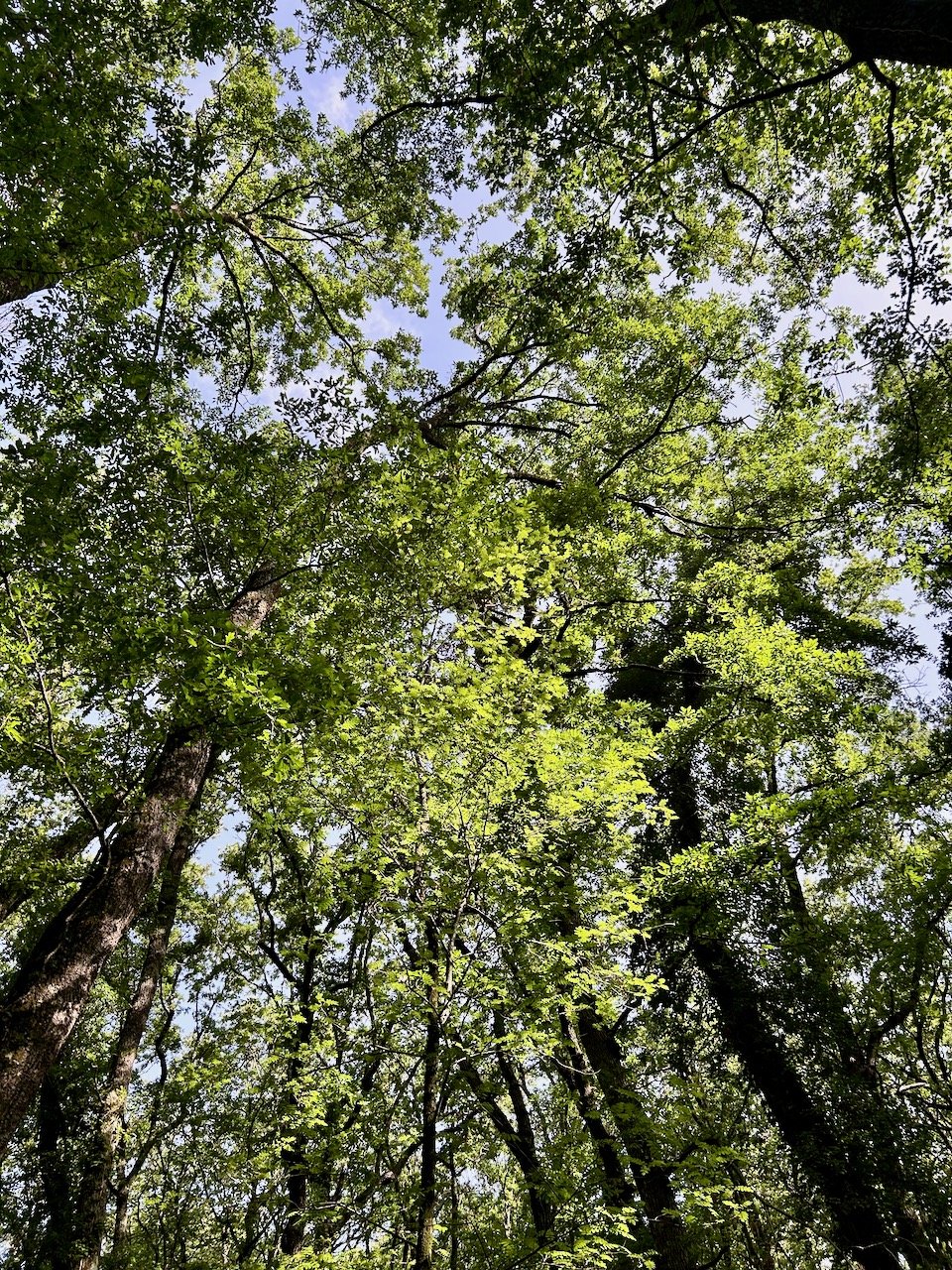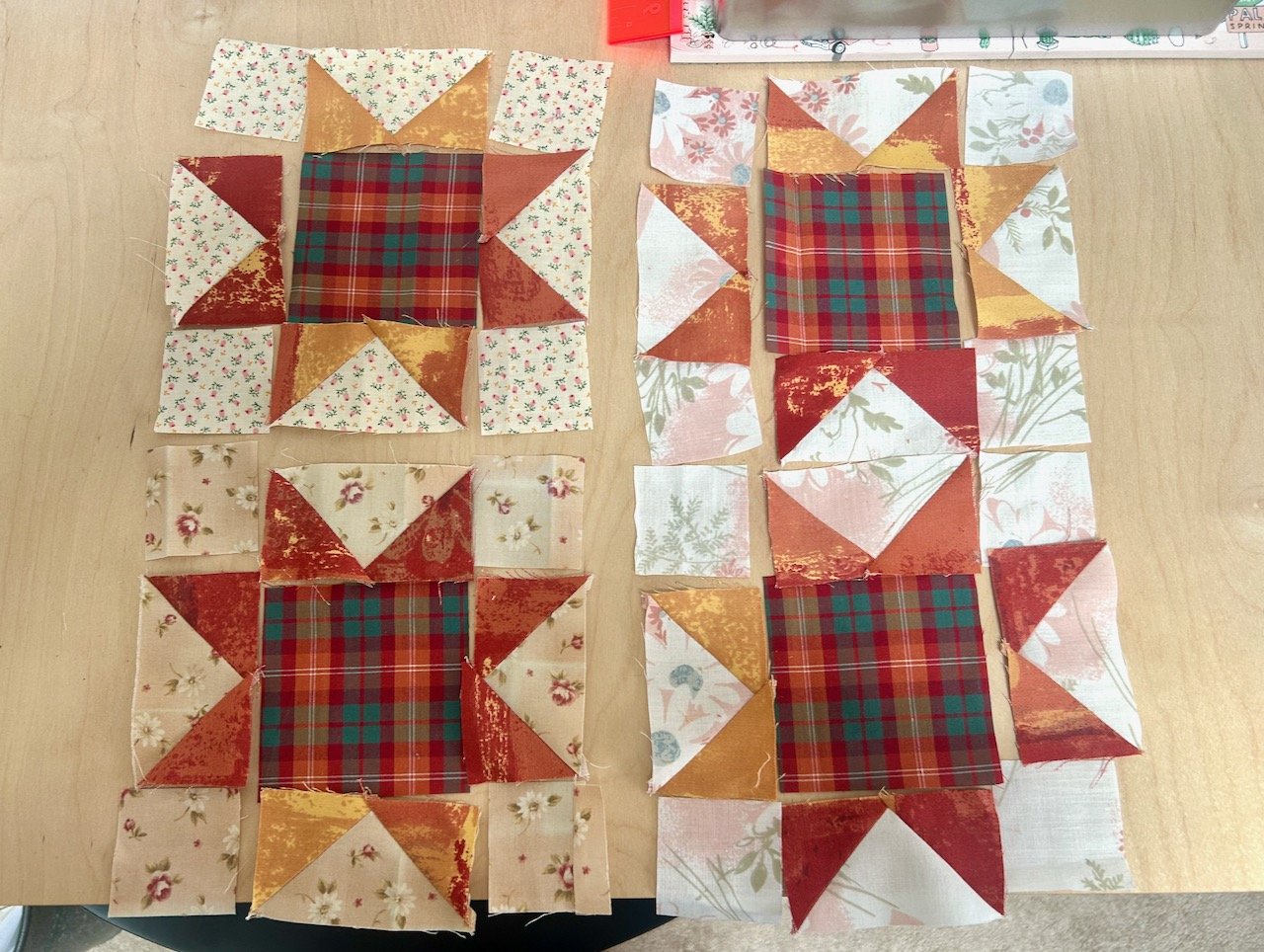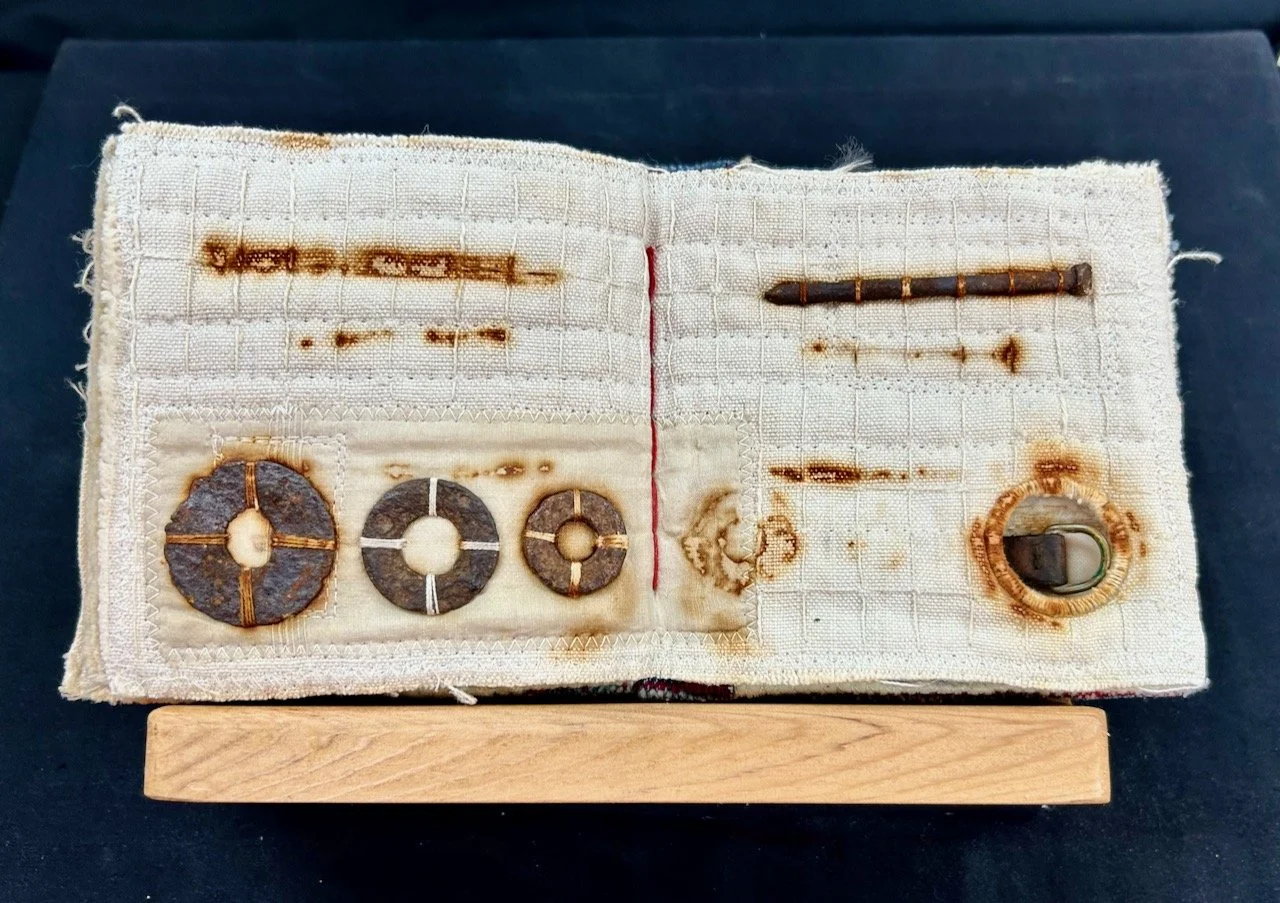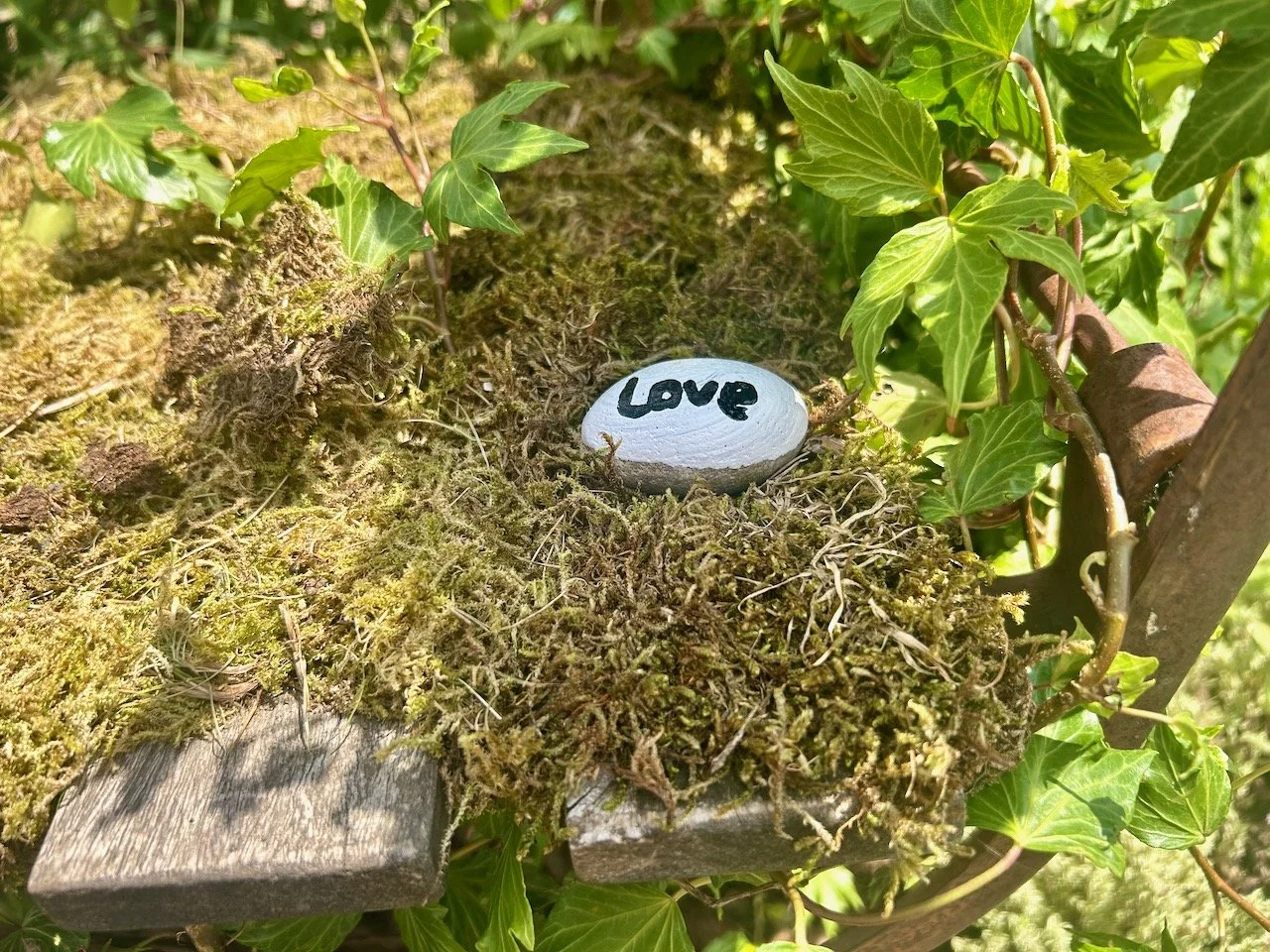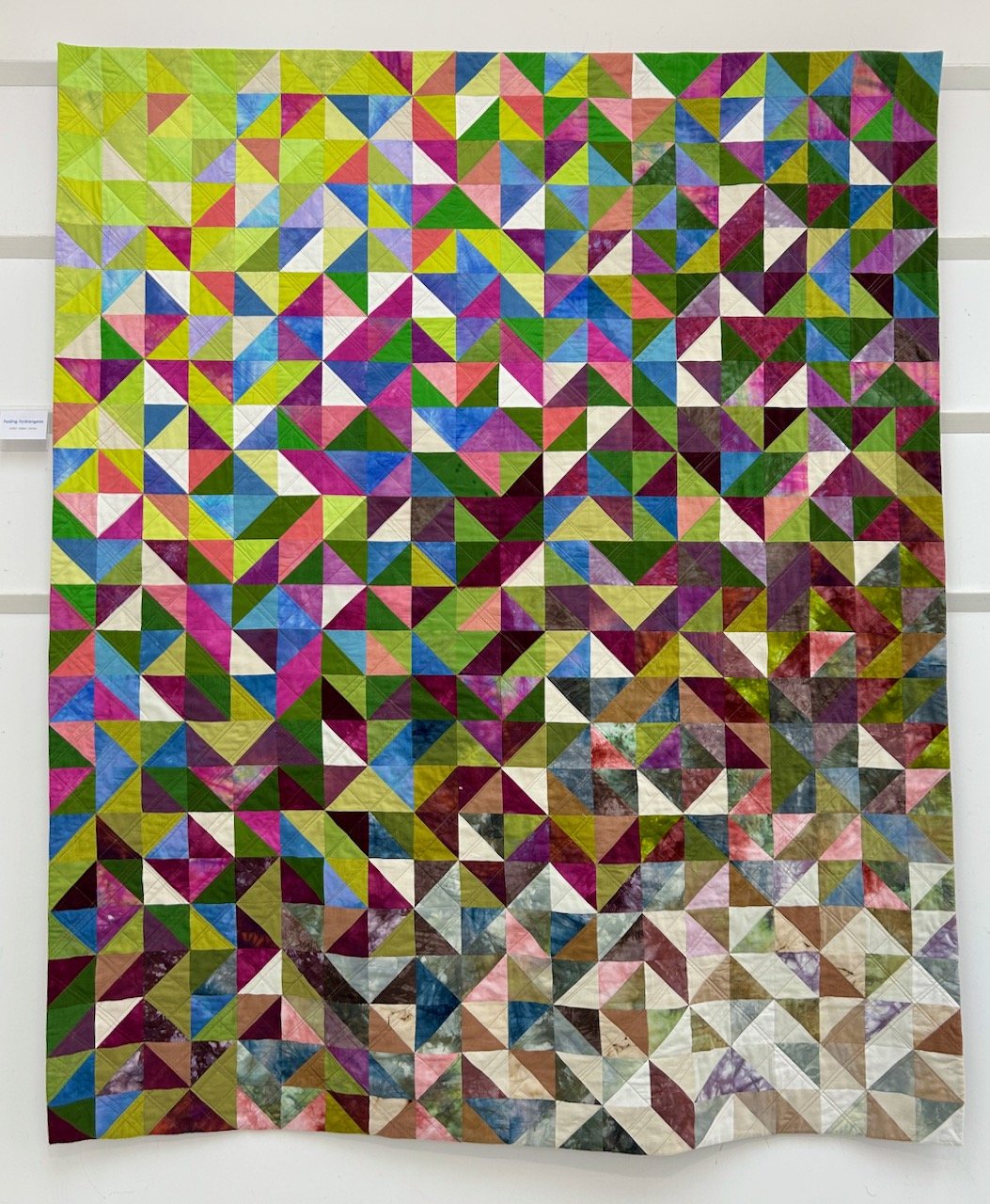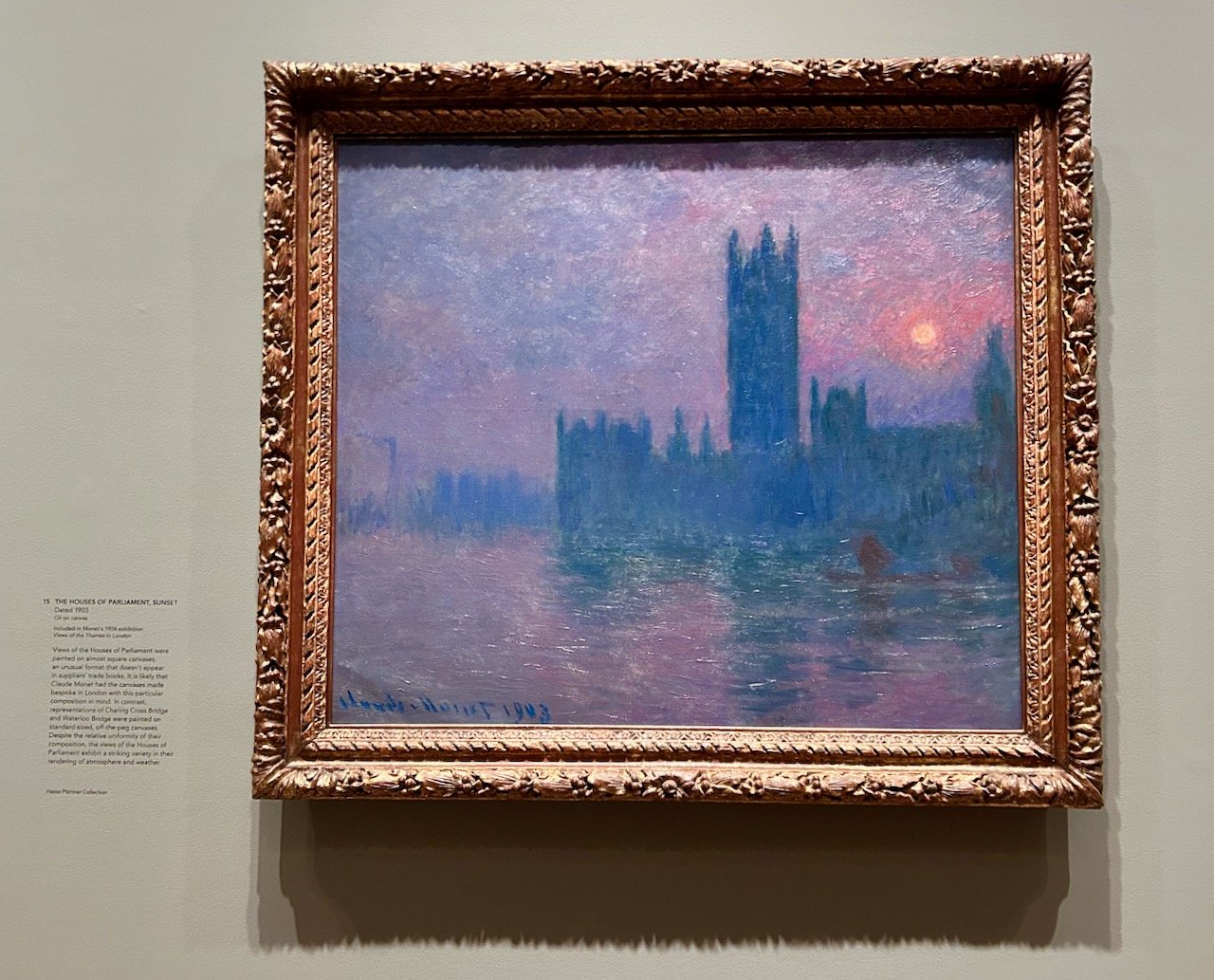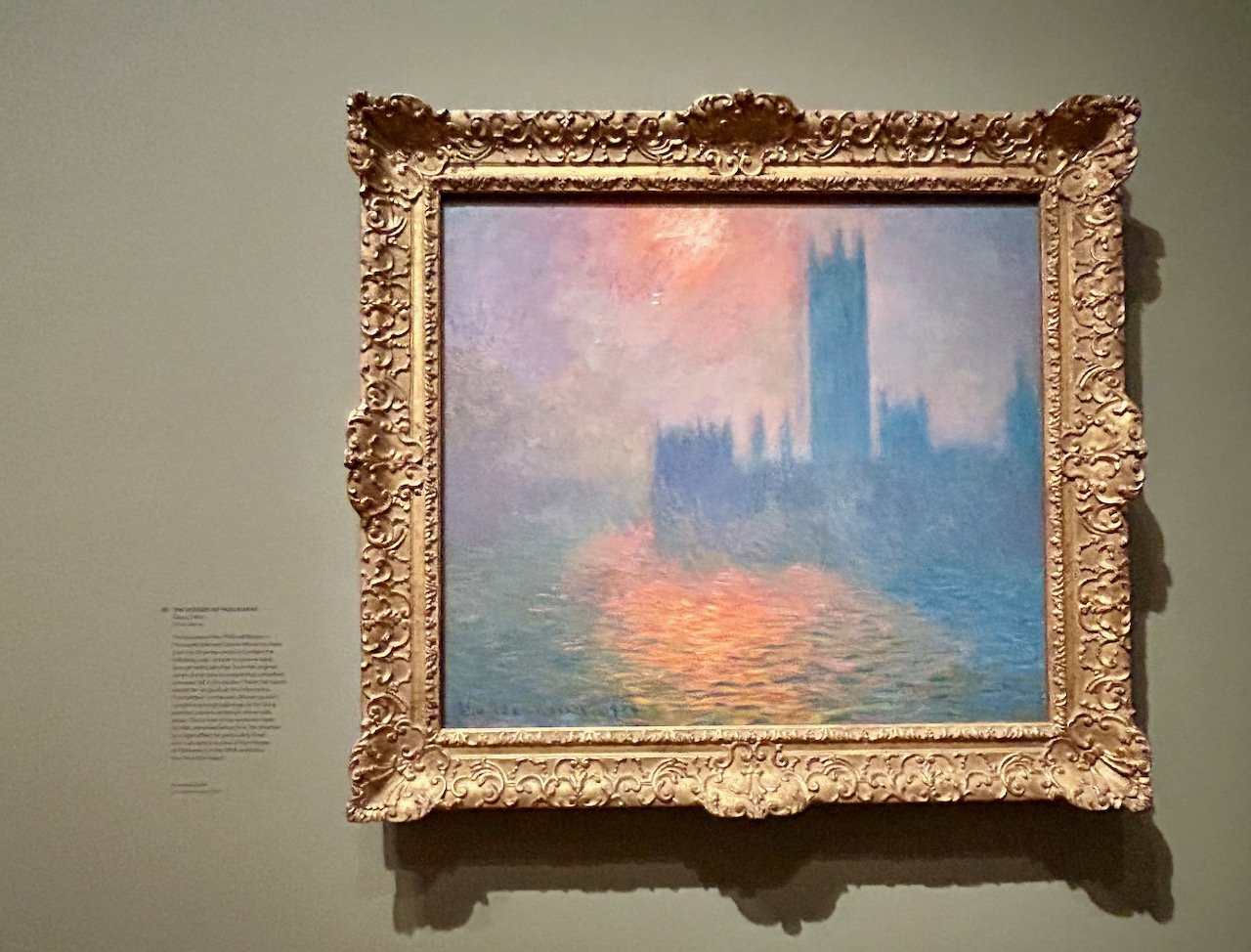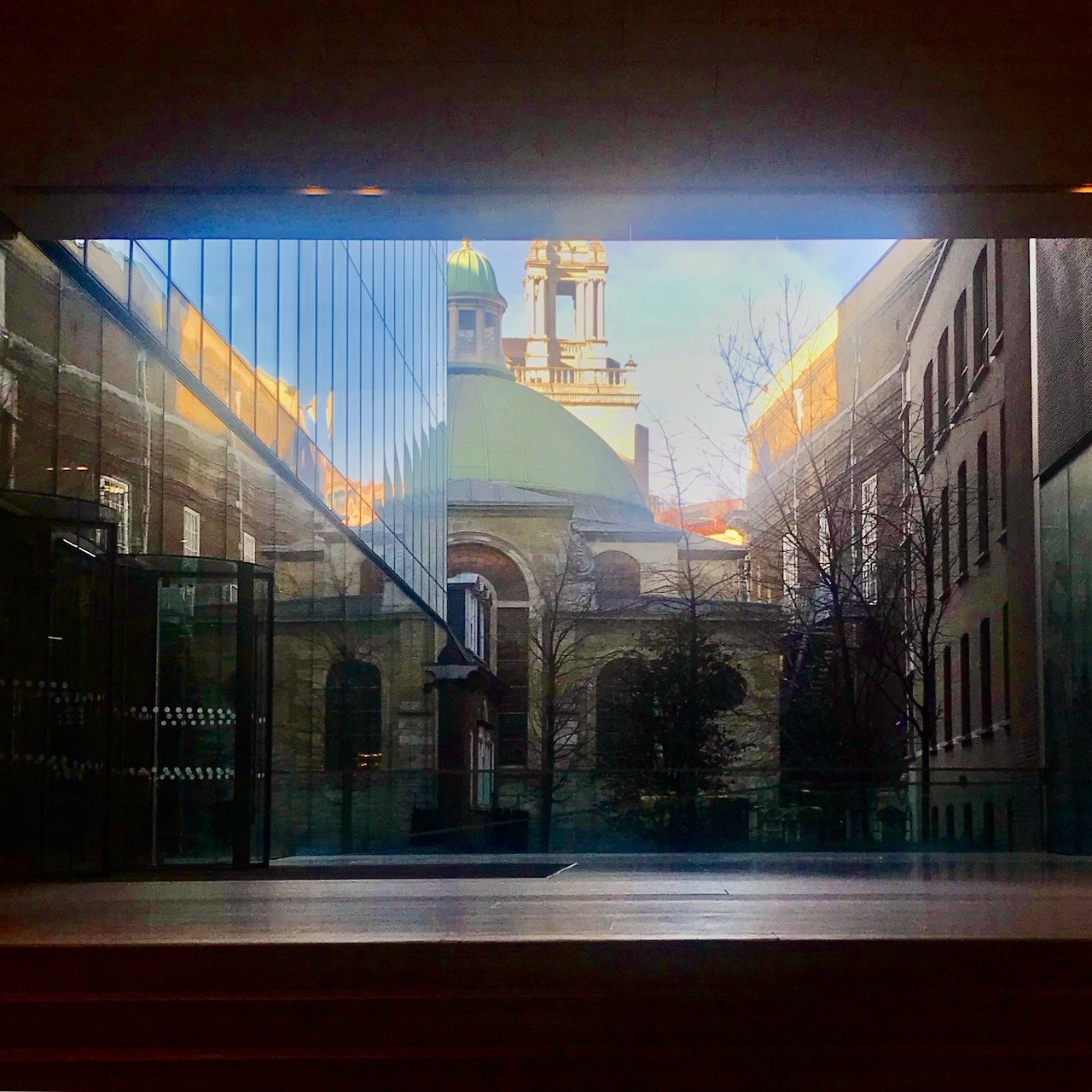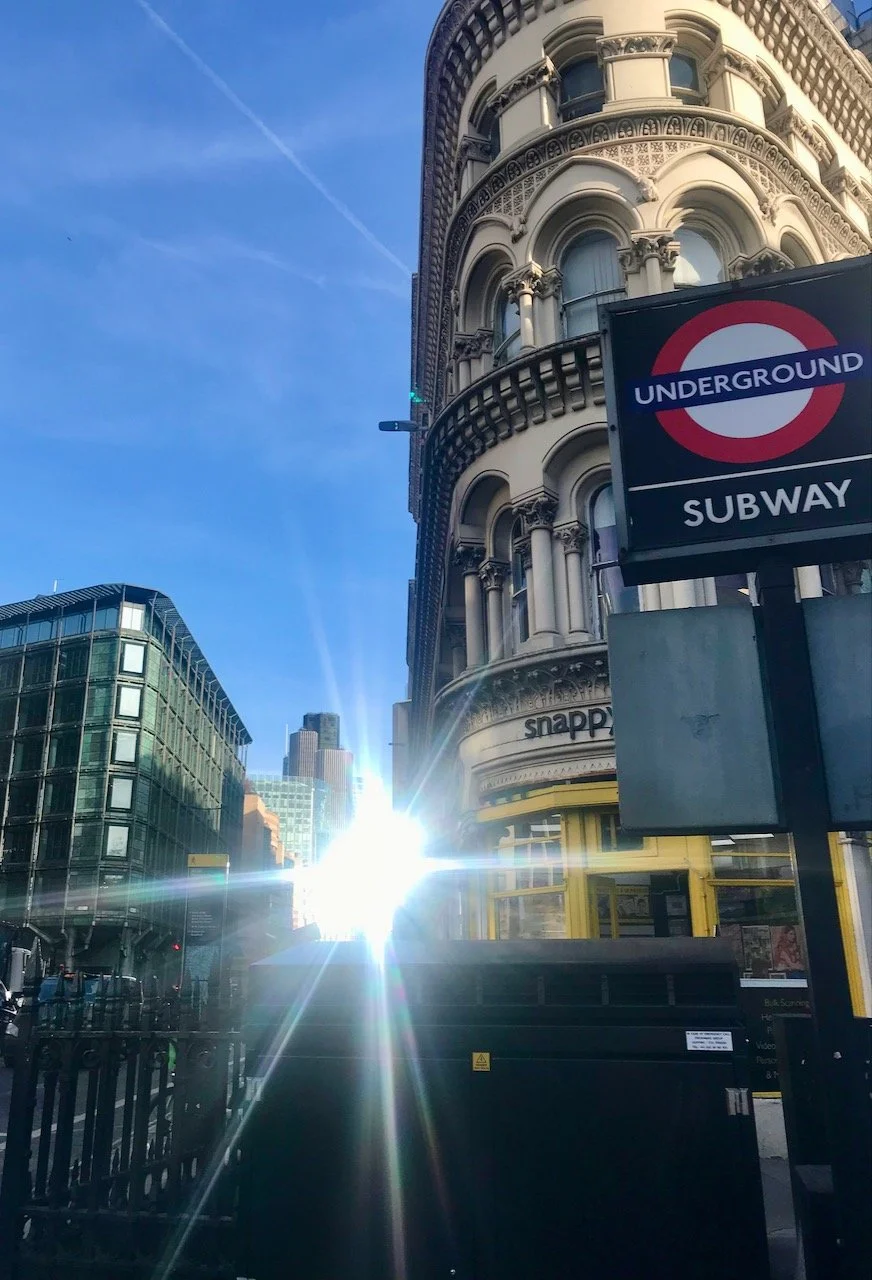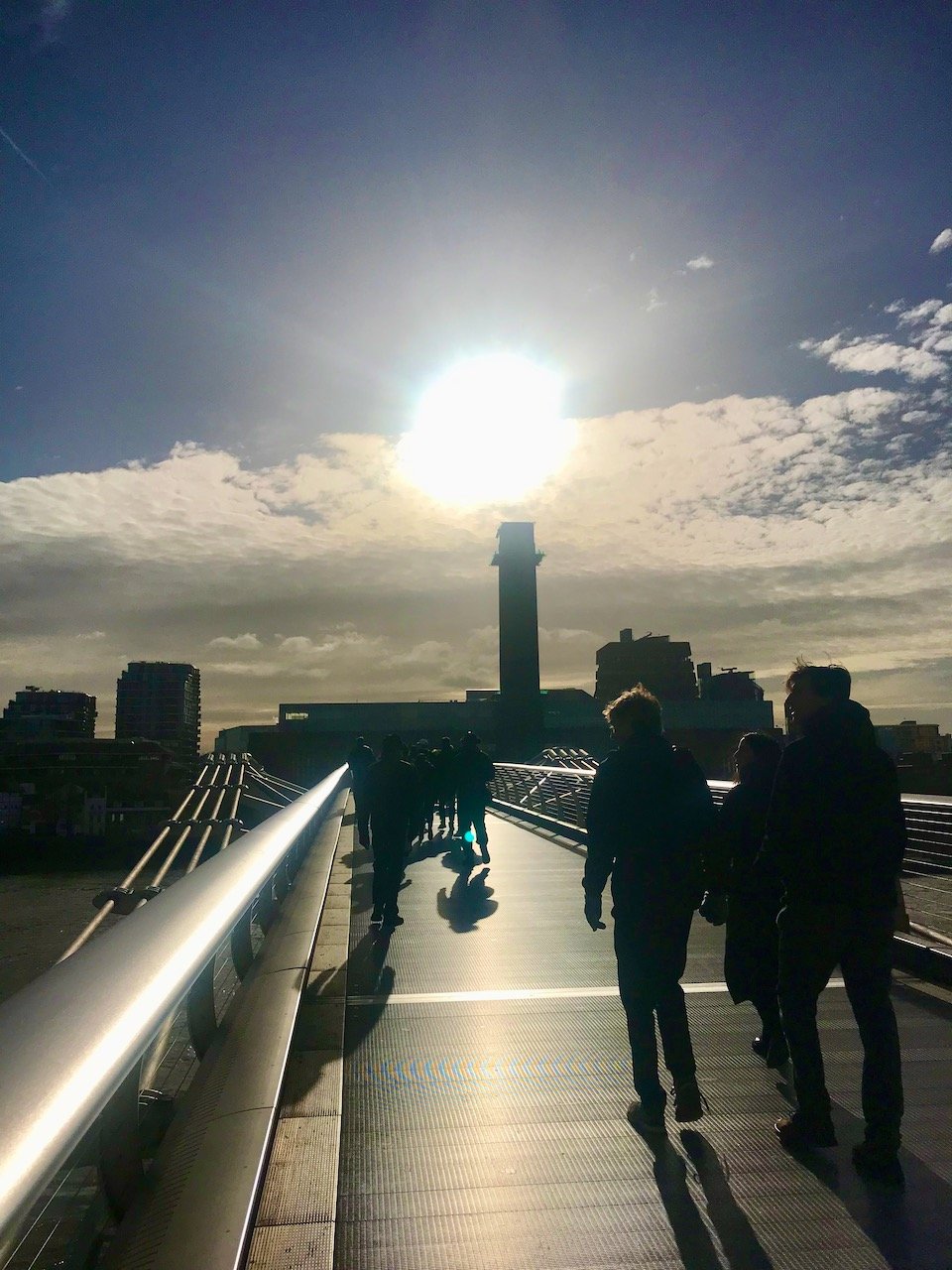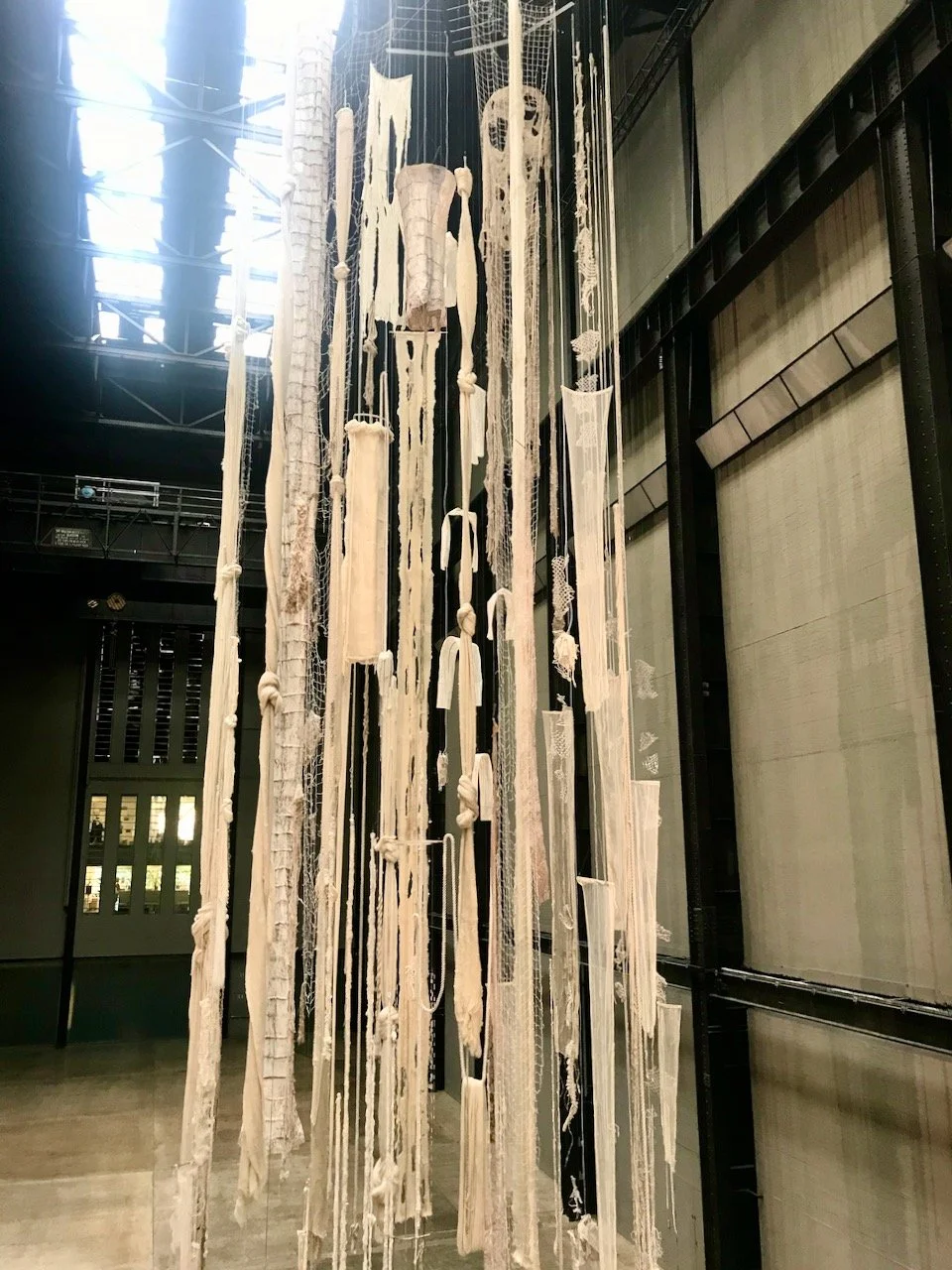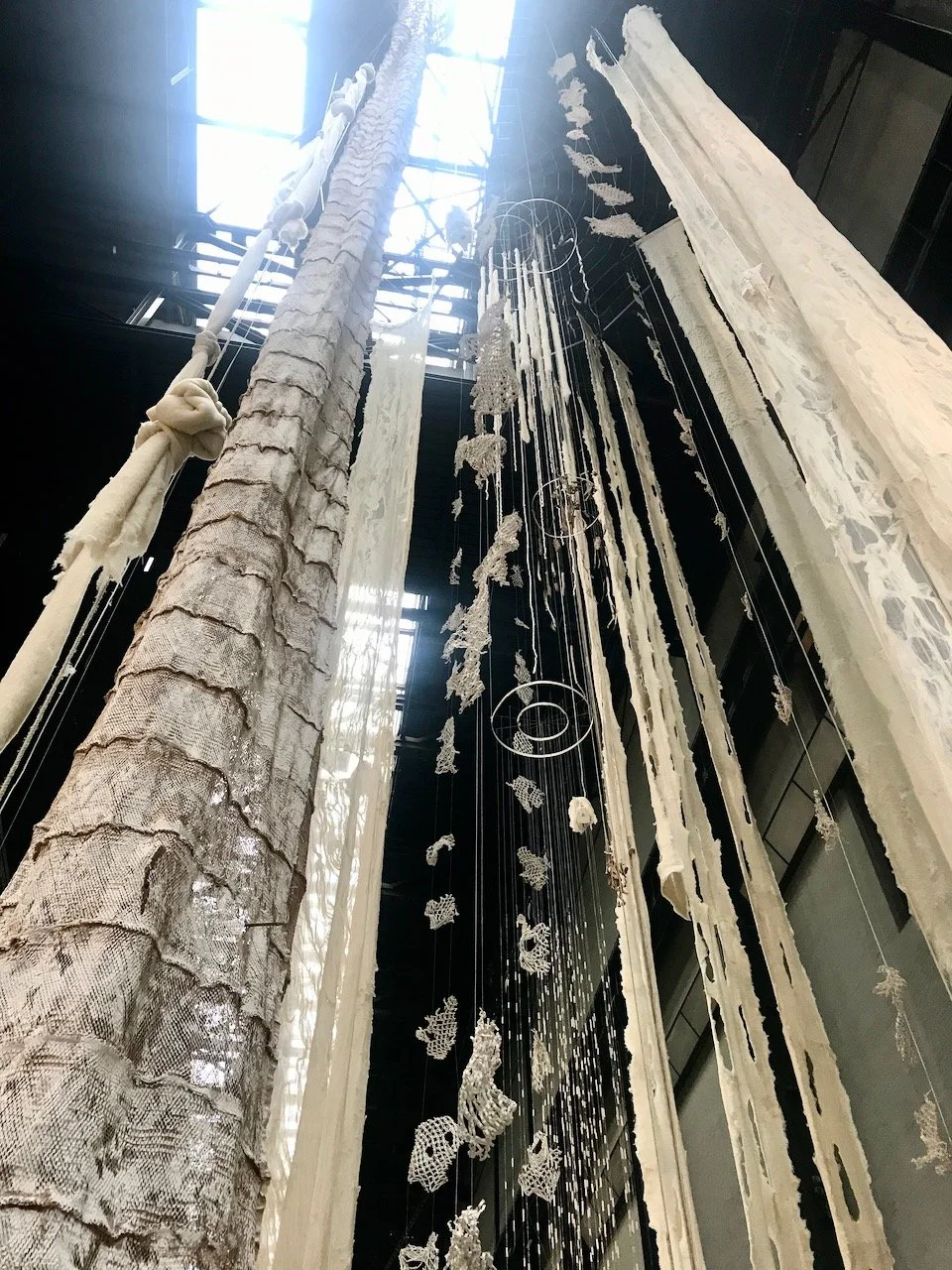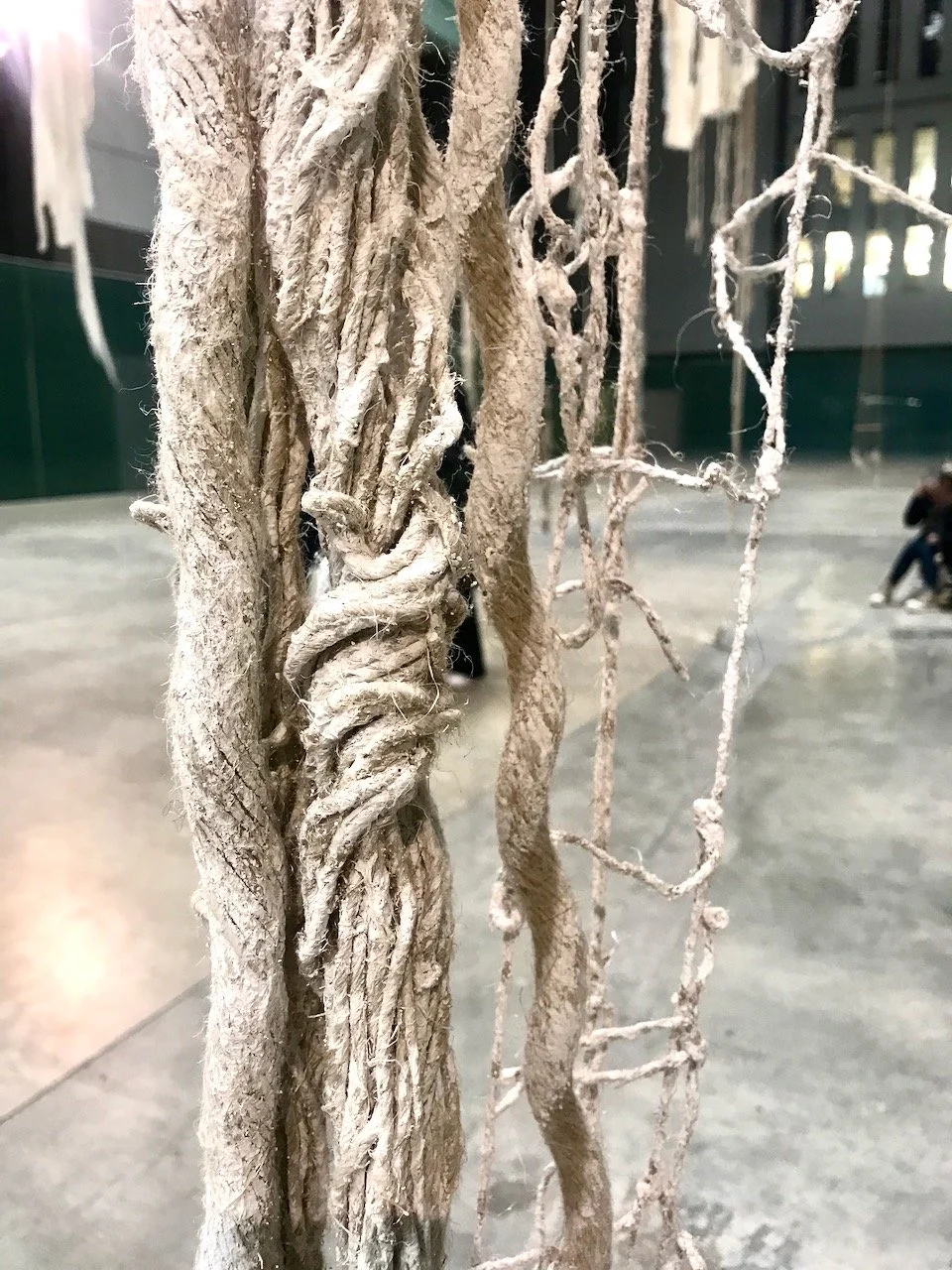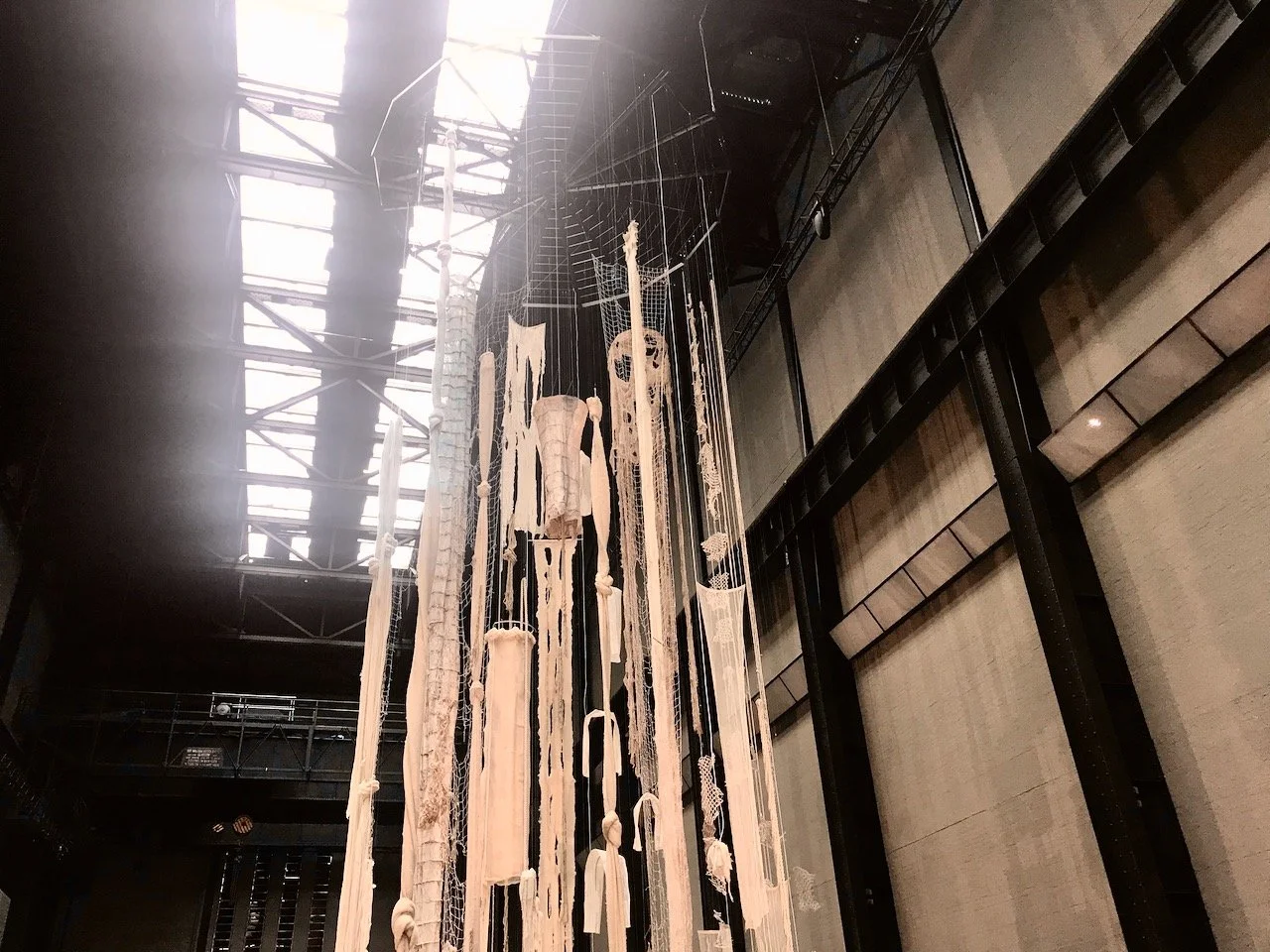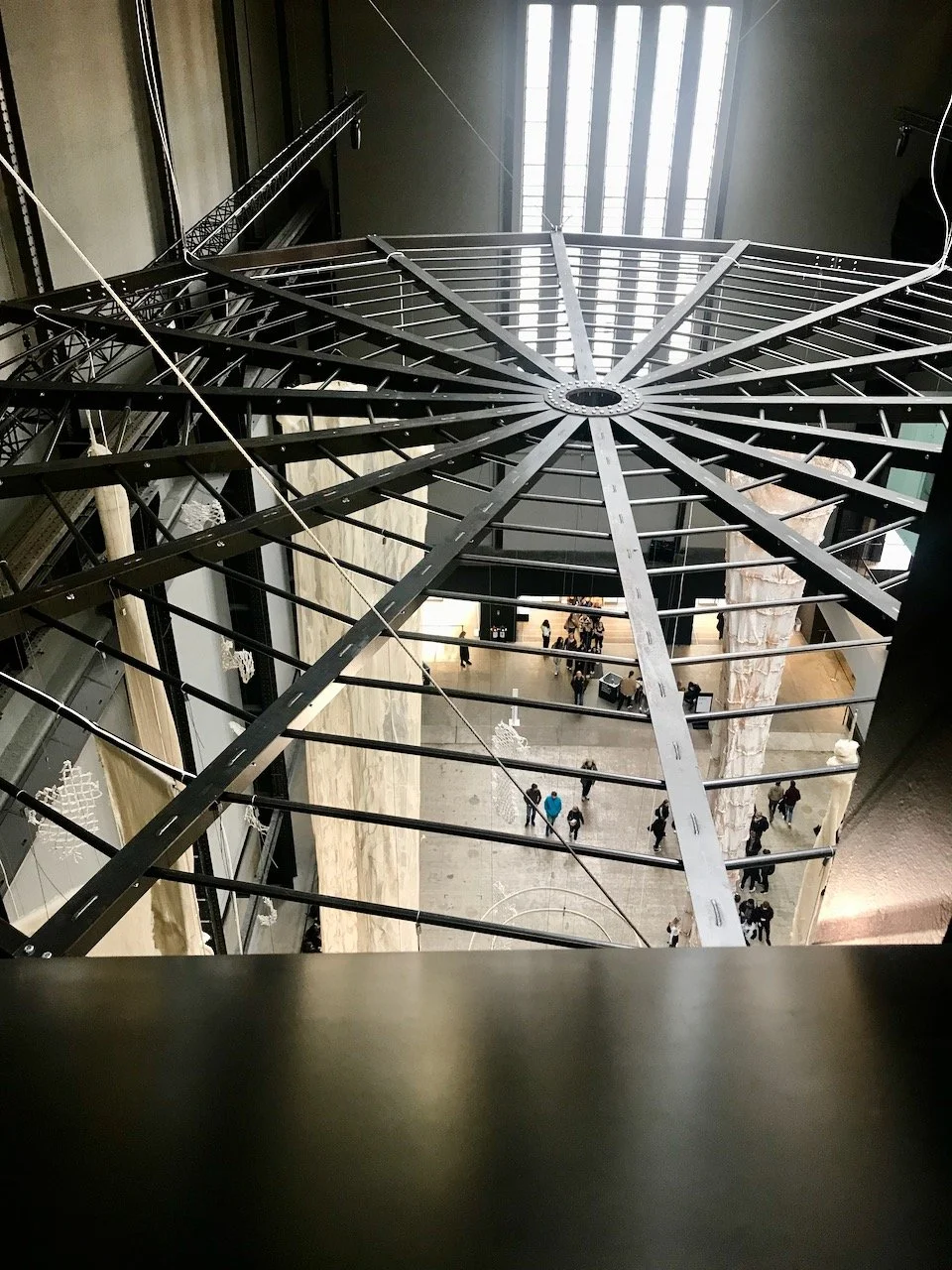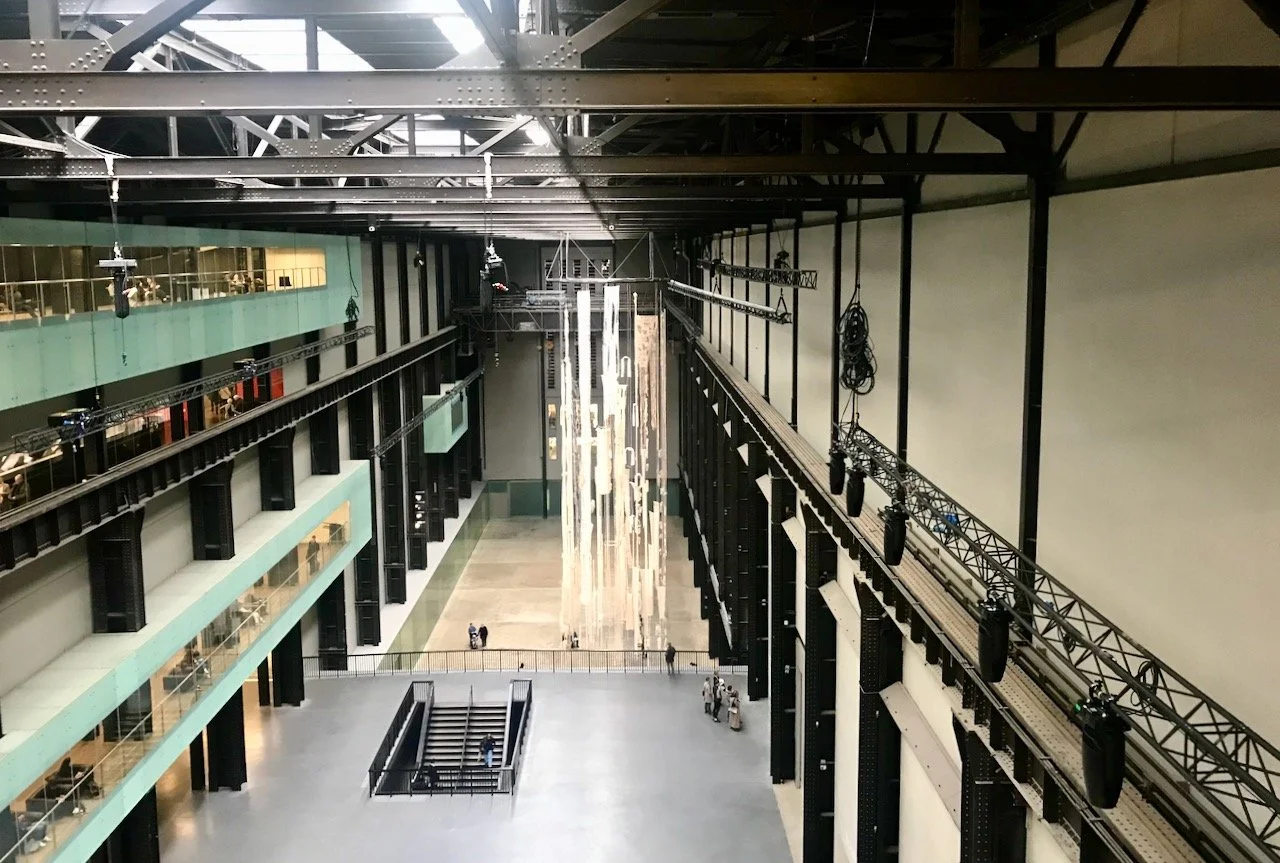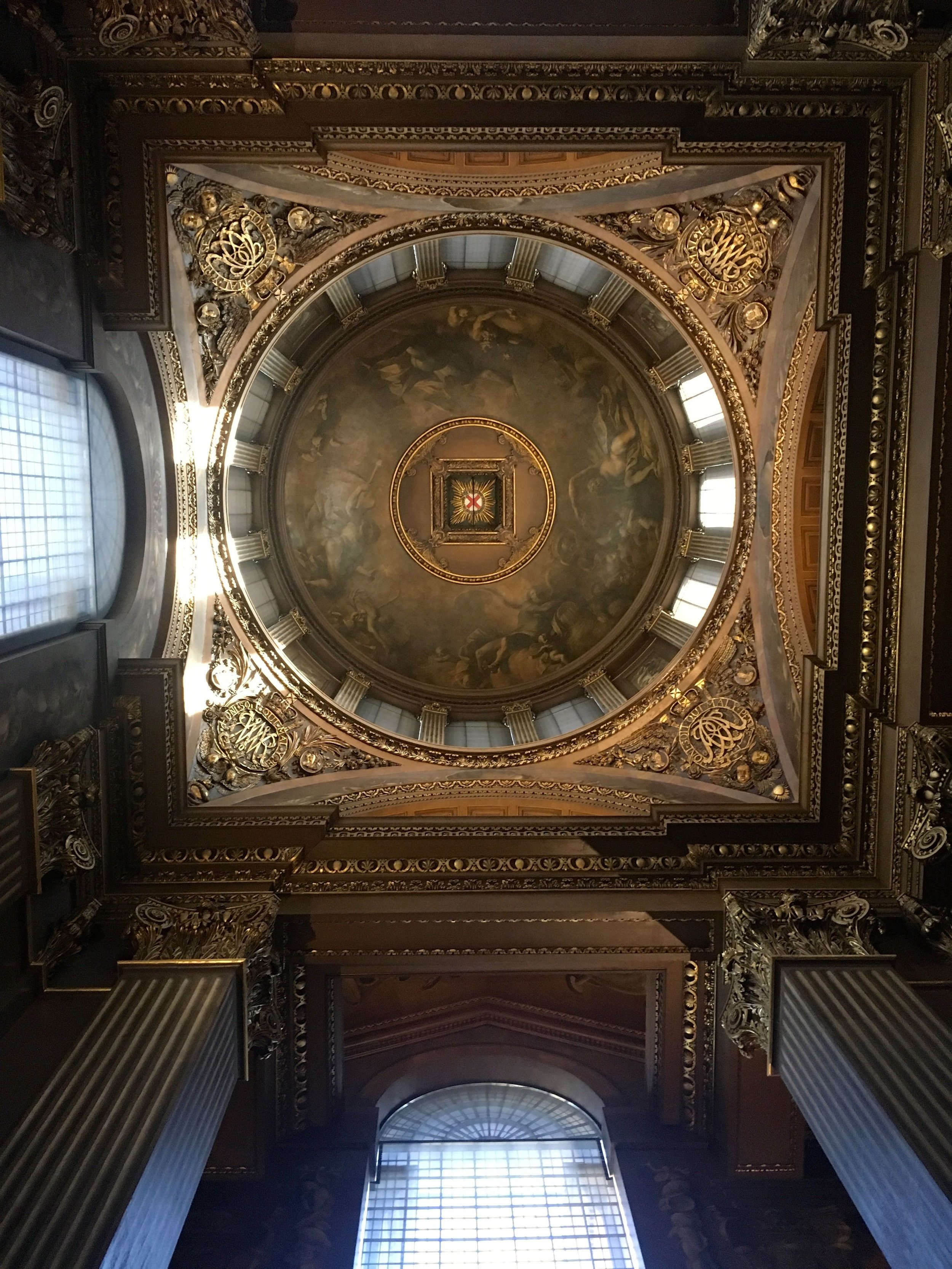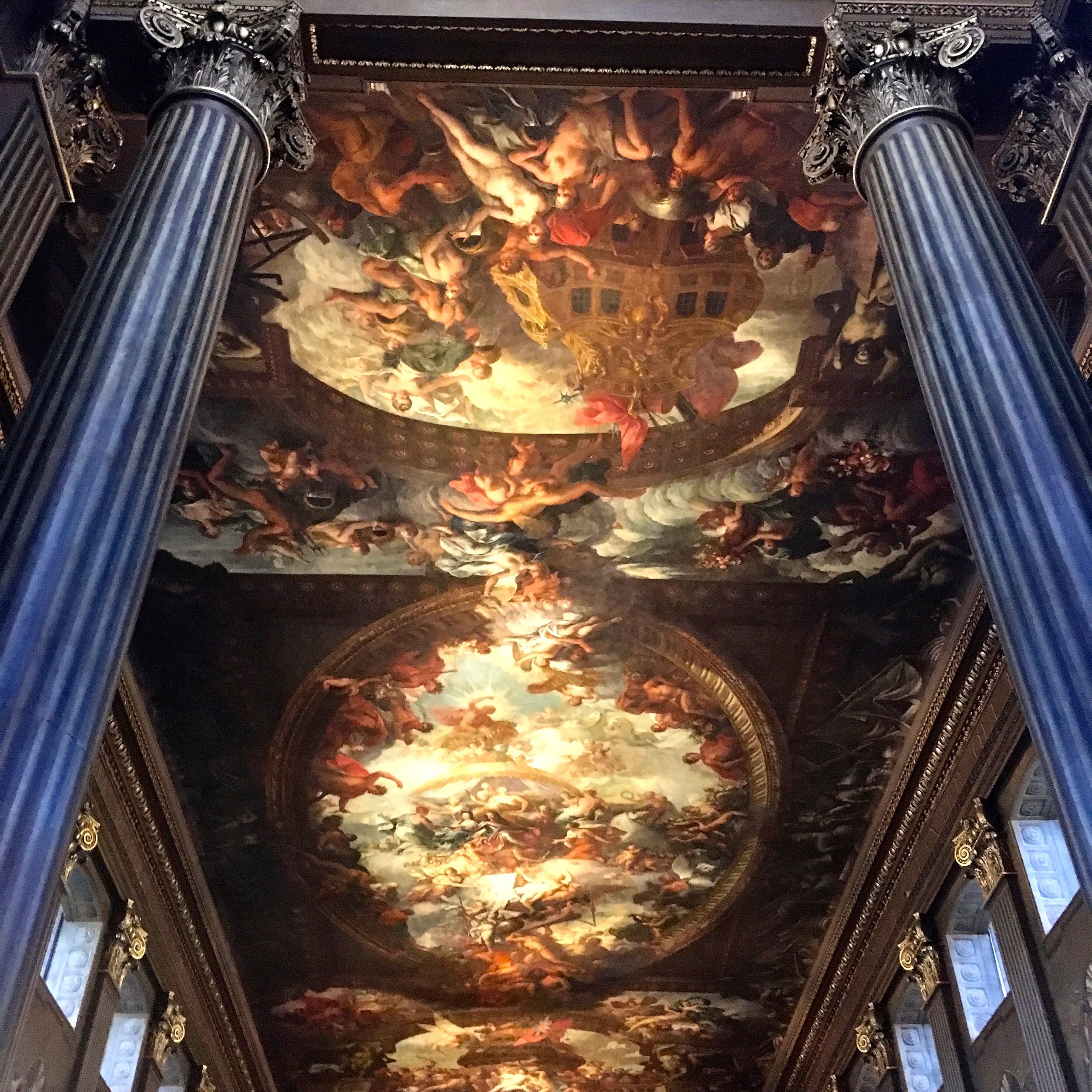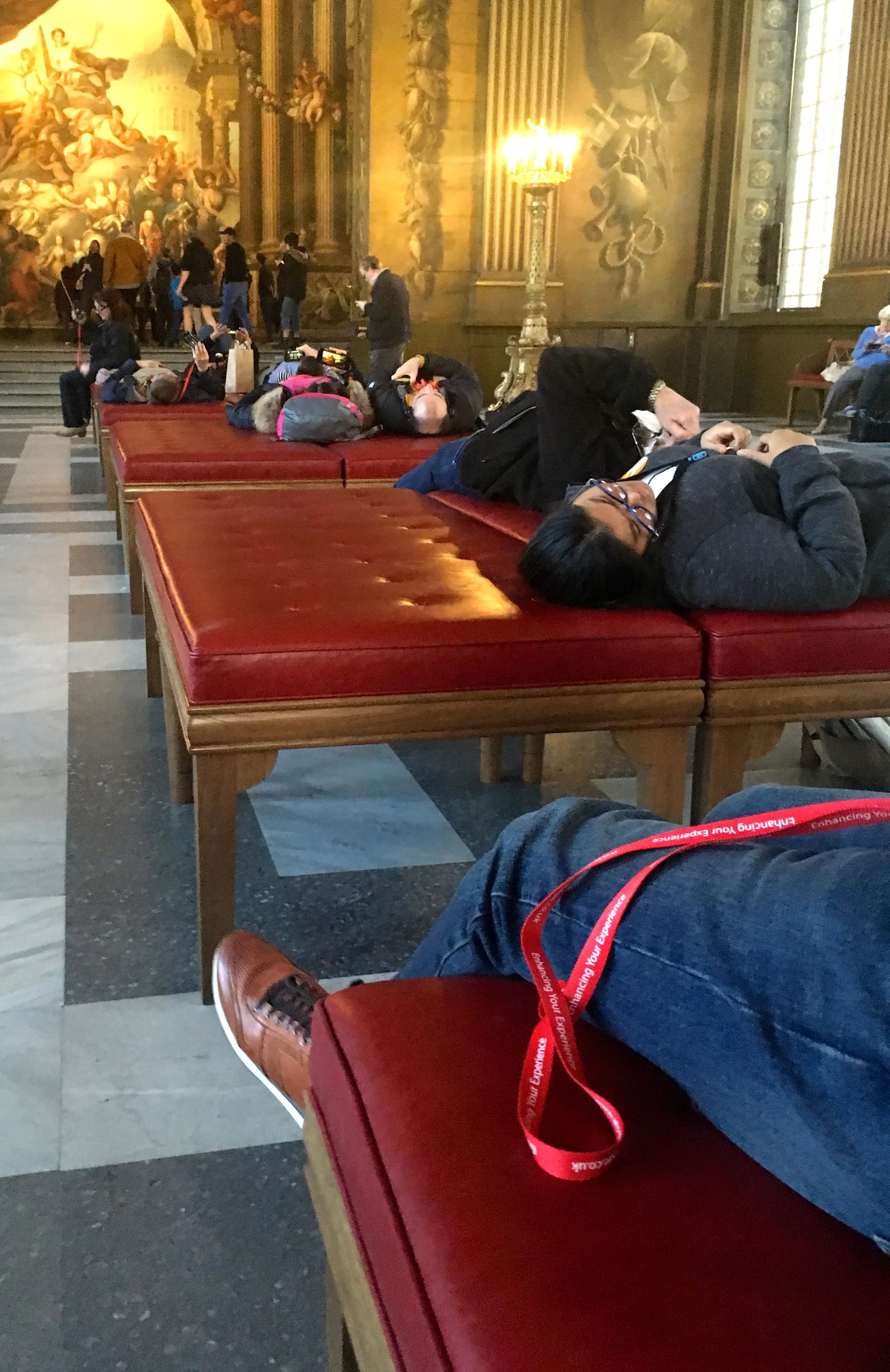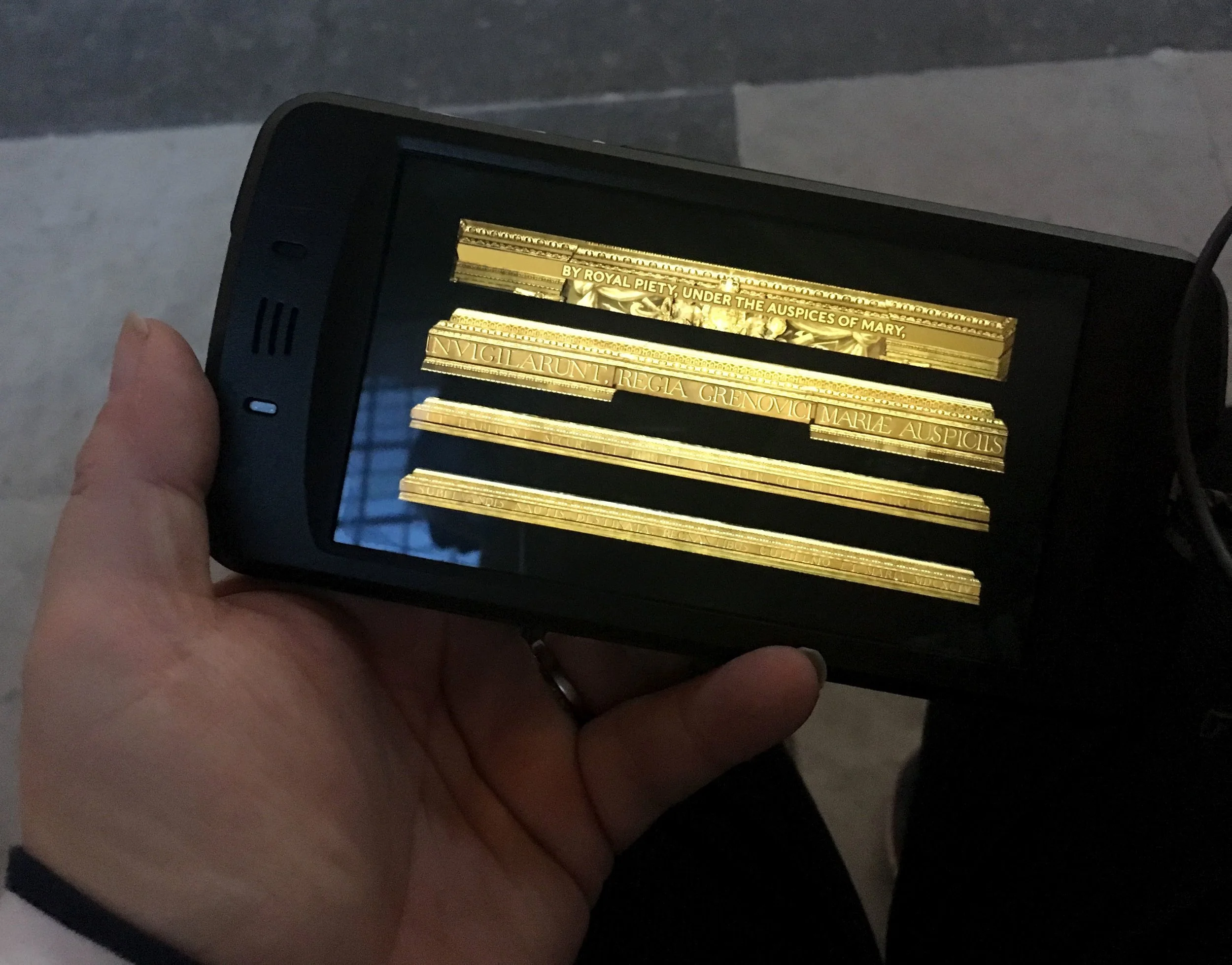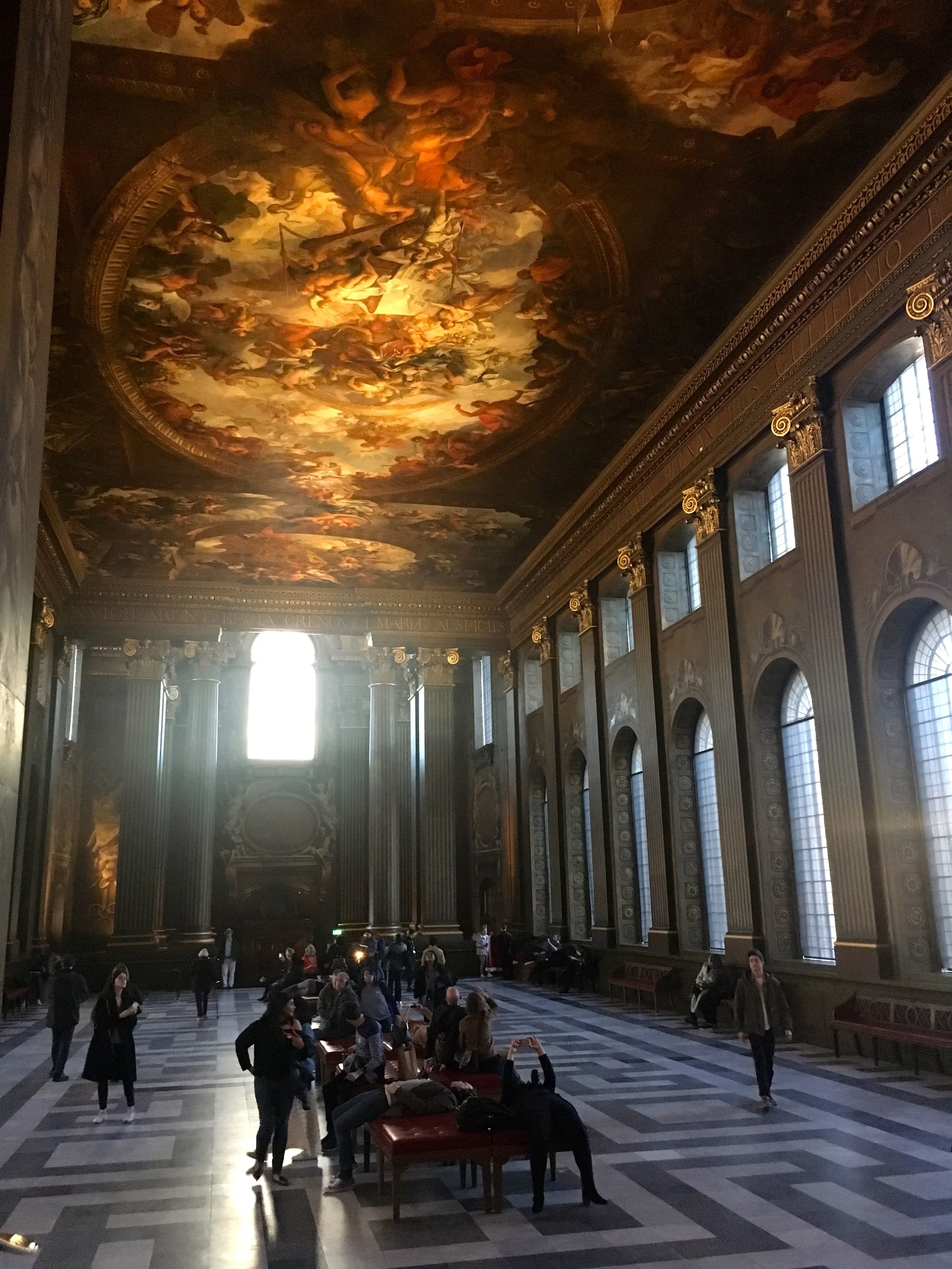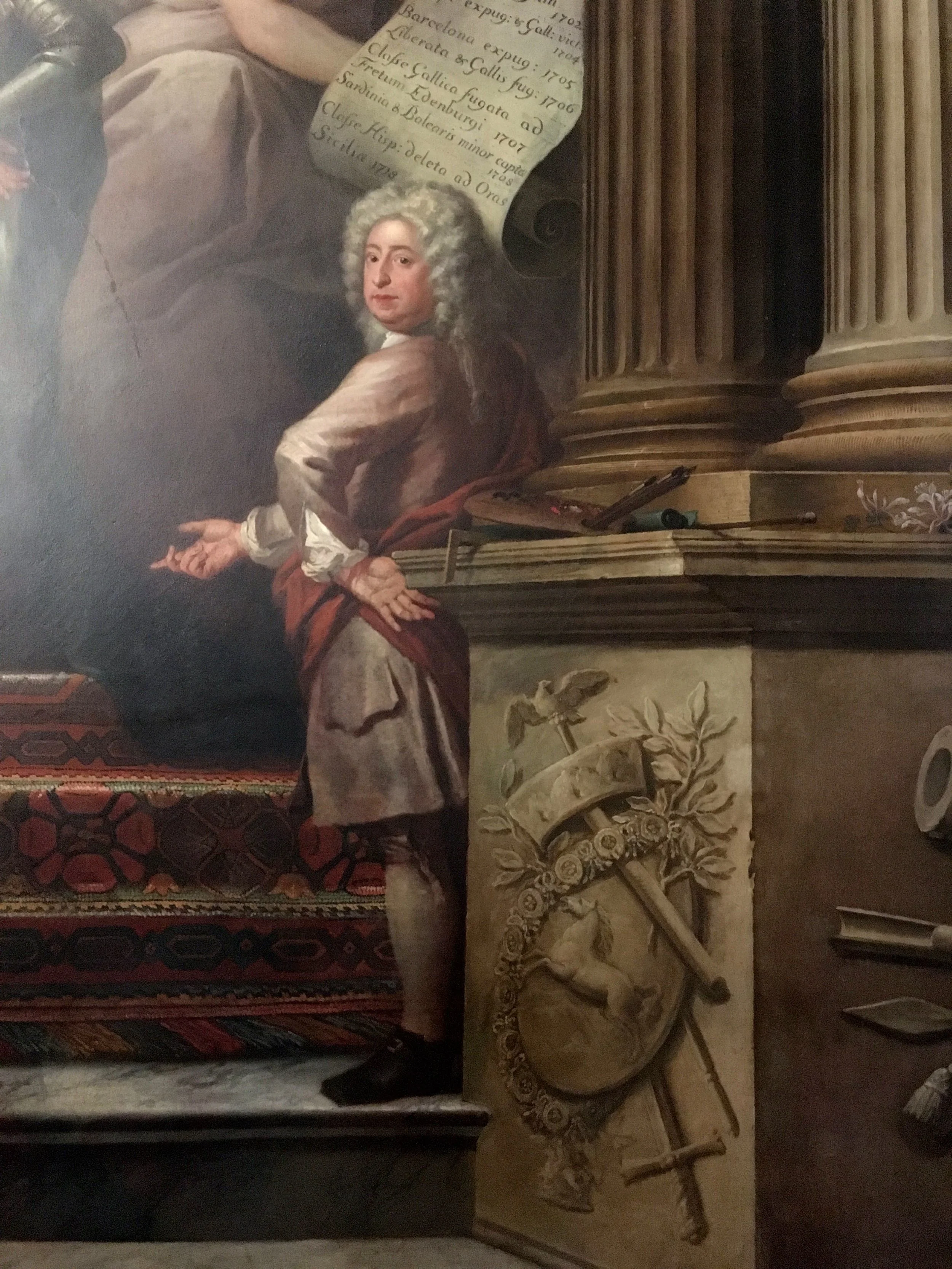Back at the start of December we popped to London for the day for a pre-Christmas visit, primarily for our annual steak fest at the gorgeous Hawksmoor restaurant in Air Street and to secure some Fortnum and Mason’s mince pies (side note - this time we opted for the crunchy almond topped mince pies, and they weren’t my favourite). I always like to use days in London to do something we can’t do here - that could be an exhibition, a museum, or something else.
This time though I’d seen that the Courtauld Gallery at Somerset House were hosting a Monet and London exhibition, and so I got us tickets. We’d not been to anything in the gallery before, even though we’d been to events and even a restaurant at Somerset House and that along with seeing some paintings seemed good enough reason to go. It seems though it was a really popular exhibition with notices up when we visited to say that tickets sold out until it closed mid January.
We’re by no imagination huge art aficionados, but we do like to take a look and try to imagine the said art in our house, or not!
As most people probably know Claude Monet is renowned as the leading figure of French impressionism, which changed modern art, and I think probably one of his most famous pieces is the Water Lilies - or at least that’s the one I knew of most. I seem to recall we saw, or at least tried to see one of these paintings in Paris once - so long ago, that if there were pictures they were probably printed photos, and also why my memory is hazy!
Views of the Thames
But as the exhibition blurb goes ‘some of Monet’s most remarkable Impressionist paintings were made not in France but in London’ depicting views of the Thames evoking atmosphere, mysterious light and colour. Paintings begun during three stays in the capital between 1899 and 1901 paintings of Charing Cross Bridge, Waterloo Bridge and the House of Parliament were unveiled in Paris in 1904. Until last year they had never been the subject of an UK exhibition, which I guess explains why they were such hot tickets!
There were 21 paintings in the exhibition and lots of people viewing them - some needing to be right in front of you, or even at the exact spot you were in and couldn’t possibly wait for you to move on - sigh! - though generally most people were much more courteous.
The paintings were definitely worth seeing, my favourites were those of the Houses of Parliament:
HOUSES OF PARLIAMENT, SUNSET - 1903 - CLAUDE MONET
LONDON: THE HOUSES OF PARLIAMENT SHAFT OF SUNLIGHT IN THE FOG - 1904 - CLAUDE MONET
THE HOUSES OF PARLIAMENT (EFFECT OF FOG) - 1903 - CLAUDE MONET
THE HOUSES OF PARLIAMENT - 1904 - CLAUDE MONET
The last one above I think is my favourite of these - this was one of the works that he made for the unrealised show in London. He’d been unable to borrow back enough sold paintings from the original series for the exhibition, so set about completing unfinished canvasses left in his studio - which goes to show that having unfinished works in progress is nothing new for crafters and artists today!
He hoped that these newly finished works would be ‘as good as the other ones, if not better’ which is just the inspiration that many of us need to clear through our own stash of half-finished projects, even if we’re nowhere near as talented or prolific as he clearly was.
It was great to see these paintings - and great that his long hoped for exhibition finally took place - we took the chance to see a bit more of the Courtauld Gallery while we were there, so look out for that post soon.

